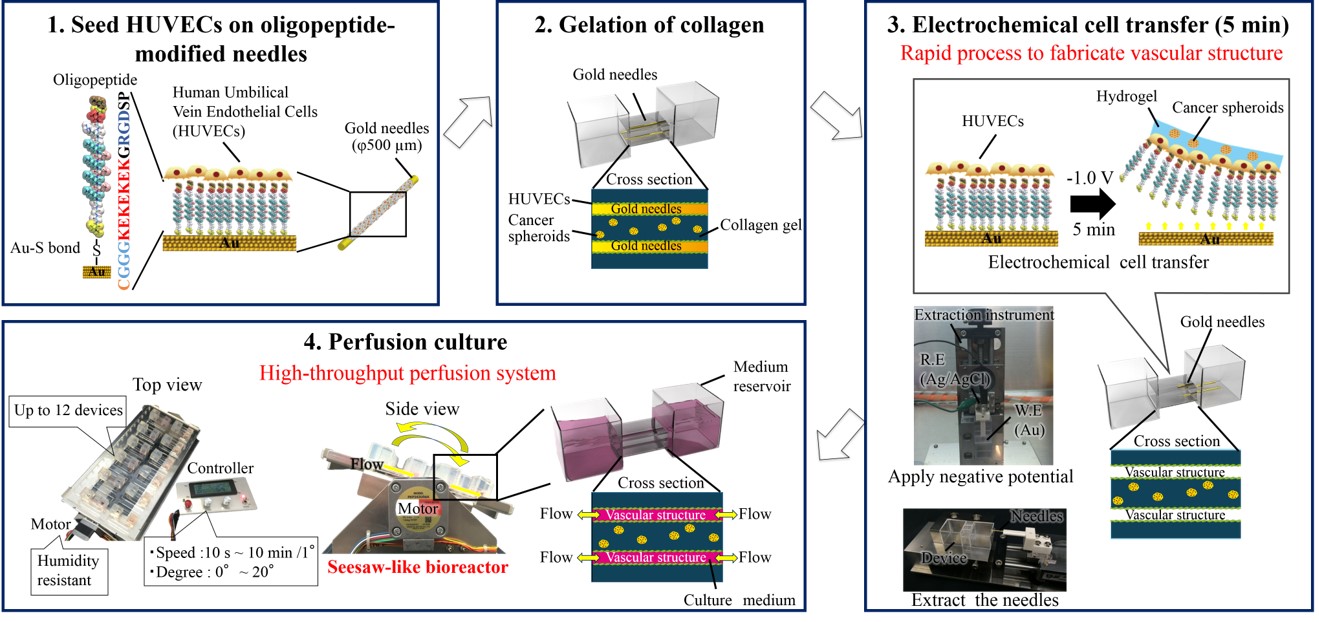| |
|
|
| |
|
● Tissue engineering |
Vascular research

Array of perfusable three-dimensional microvasculatures on active tilting stage |
| Objective |
Angiogenesis plays a central role in various physiological phenomena including tumor development and wound healing. It is widely believed that the inhibition of angiogenesis around tumor is effective to prevent cancer progression and metastasis. In a current drug development, anti-angiogenic drug candidates are examined based on proliferation and migration of endothelial cells in a conventional culture dish or in a hydrogel. However, probably because of misunderstanding of cellular responses to drugs and/or insufficient replication of cellular microenvironments, only a limited number of candidates successfully pass through subsequent pre-clinical and clinical trials, making the drug development costly and inefficient. Therefore, robust, reproducible, and biomimetic endothelial cell culture platform is desired to accelerate discovery of anti-cancer drugs.
In this study, we fabricated in vitro vascular-angiogenesis models where cells cultured under a perfusion condition on a tilting stage. |
| Results |
We developed electrochemical cell transfer, and applied it to fabricate vascular structure in the device. It is rapid reaction and we can use as many needles as you want. To perfuse culture medium easily, we developed seesaw-like bioreactor and designed the device that have two culture medium reservoirs at both ends of the vascular structure. So we just placed devices on the tilting system, and culture medium easily perfused from one reservoir to the other through the vascular structure.
We confirmed that the fabricated vascular structure have cell-cell junction and after 4 days of perfusion culture, vascular cells oriented to the flow direction.
Also, when we encapsulated breast cancer cells in the collagen gel, vascular cells started to migrate and sprout into collagen gel from the vascular wall.
This endothelial vascular model holds a great potential to become a new high-throughput platform for in vitro anti-cancer drug evaluation.

Fig. 1 Vascular-angiogenesis model
|
| [Reference] |
| |
|
| ● Vascular |
| ● Liver |
| ● Hair |
| ● Pacnreas |
| ● Bone |
| ● Lab Chip/ MEMS |
| ● Surface modification |
| ● Microbe |
| |
| |
|
|
| |

|
|
 Fukuda Lab, Faculty of Engineering, Yokohama National University Fukuda Lab, Faculty of Engineering, Yokohama National University |
|